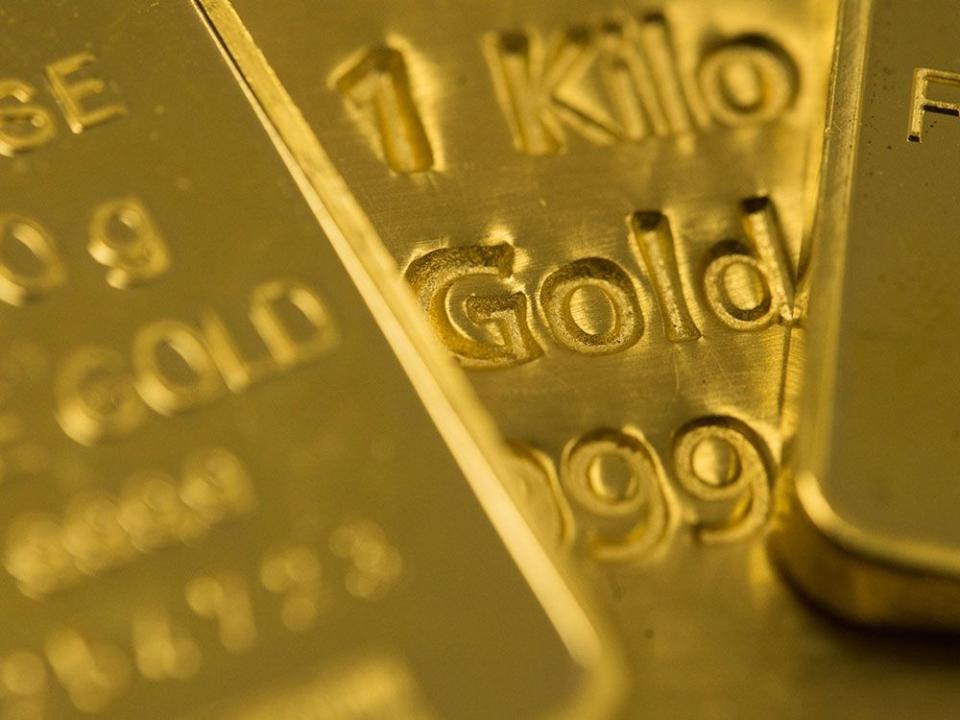Why gold has lost its status as a haven from inflation and market chaos

Gold bugs should be having a moment.
Inflation appears out of control for the first time in decades. Stock markets have been pummelled. The shadow of a recession is looming amid rapidly rising interest rates. Russia’s ongoing assault on Ukraine has unleashed chaos on global food supplies, trade and the political order.
All these factors traditionally drive investors to buy gold, a safe store of value for centuries. Yet the price of gold, along with equities of gold miners, are in free fall.
Case in point: Last week, gold fell three per cent to US$1,665 per ounce after the release of data that showed that U.S. inflation hit 8.3 per cent in August, the opposite of what you would have expected given fresh evidence of intense upward price pressure. Gold has now sunk some 20 per cent since hitting US$2,087 per ounce in March.
Meanwhile, since April, the VanEck Gold Miners ETF and the Van Eck Junior Gold Miners ETF, two exchange-traded funds indexed to the largest gold producers and explorers, respectively, are down 42 per cent and 40 per cent.
Against that backdrop, Canadian gold mining executives meet in Denver this week for Gold Forum Americas, a conference at which the largest companies will pitch investors. Analysts said they expect one of the main themes will be how gold producers plan to keep costs under control, rather than try to lean into the inflation story. Indeed, many analysts attribute gold’s underperformance to central bankers’ response to inflation — jacking up interest rates to cool the economy.
“Taking a step back, higher nominal rates coupled with potentially moderating inflation over the coming months (even if still well above the Fed’s 2 per cent target) will likely lead to lower gold prices (higher interest rates increase the opportunity cost of holding gold),” Fahad Tariq, an equities analyst at Credit Suisse, wrote in a note on Sept. 13 to investors, referring to the U.S. Federal Reserve.
Fahad wrote that markets are currently pricing in a 20-per-cent chance that the Fed raises interest rates by a full percentage point, something the Bank of Canada did in July.
A bearish mood seems to have infected the sector, with even the largest gold producers looking to diversify
One of the narratives that has supported gold in the past is that central bankers can’t be trusted to keep a lid on prices. As recently as November 2021, Fahad had written about gold as an “inflation hedge” and “defensive asset” that outperforms when growth-oriented assets struggle. Gold prices rose through the first few months of the year, as investors sought a haven amid the geopolitical chaos unleashed by the war in Ukraine.
But Fahad acknowledged that the case for gold as a haven only persists if the global economy enters a protracted recession, or if central bankers fail to keep pace with inflation. Credit Suisse analysts said they see central bankers taming inflation through higher interest rates, and a shallow recession as being a more likely scenario than a deeper downturn. As a result, they lowered their gold price estimates this year to US$1,725 per ounce from US$1,850 per ounce, and they forecast US$1,650 per ounce in 2023.
Meanwhile, a bearish mood seems to have infected the sector, with even the largest gold producers looking to diversify.
Last week, Agnico Eagle Mines Ltd., the largest producer of gold inside Canada, and the third largest gold miner in the world, announced it would diversify its portfolio by investing $580 million to gain a 50 per cent stake in the San Nicolás copper-zinc project in Mexico.
For Agnico, which is solely focused on precious metals, making such a large investment in an unbuilt copper-zinc project that’s still years away from production — $580 million represents 36 per cent of its operating margin through the first six months of this year — represents a new direction.
Chief executive Amman Al-Joundi described it as “a unique opportunity,” given that his company already operates a mine in Mexico.
Similarly, Natalie Frackleton, an Agnico spokesperson, cast it as a one-off: “Agnico’s primary strategy is to be a world-class gold producer. However, we believe San Nicolás provides a small, natural amount of diversification to our gold business,” she said.
Still, with demand for both copper and zinc expected to grow based on their usage in energy transition technologies, the deal may be a harbinger of how the gold miners seek growth in the future.
Teck sells half of Mexican copper project to Agnico Eagle as it shifts focus to larger ventures
Kinross Gold stock jumps as company promises to boost share buybacks
Why Canada's 'orphan' mineral explorers are struggling despite surging commodity prices
Bank of Montreal analyst Jackie Przybylowski wrote recently that more gold companies may look to diversify their commodities as “electrification and green energy themes” attract investment attention.
Toronto-based Barrick Gold Corp. chief executive Mark Bristow has acknowledged that at one point several years ago he engaged in unsuccessful merger discussions with U.S.-headquartered Freeport-McMoran Inc., one of the largest copper producers in the world.
“Copper is probably the most strategic metal, and it’s geologically related to gold,” Bristow said. “So if you want to become a world-leading gold company in the fullness of time, you are going to end up producing [copper].”
If gold prices continue to slide, other gold miners may also look to make copper, zinc and other metals part of their portfolio.
• Email: gfriedman@postmedia.com | Twitter: GabeFriedz
Listen to Down to Business for in-depth discussions and insights into the latest in Canadian business, available wherever you get your podcasts. Check out the latest episode below:

 Yahoo Finance
Yahoo Finance 